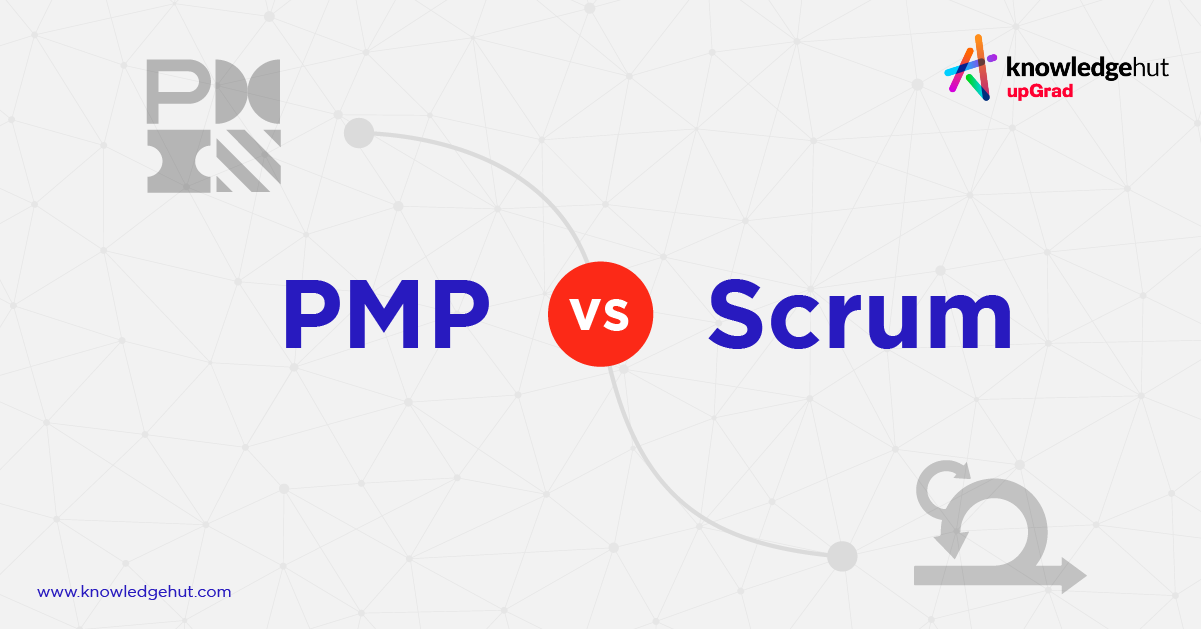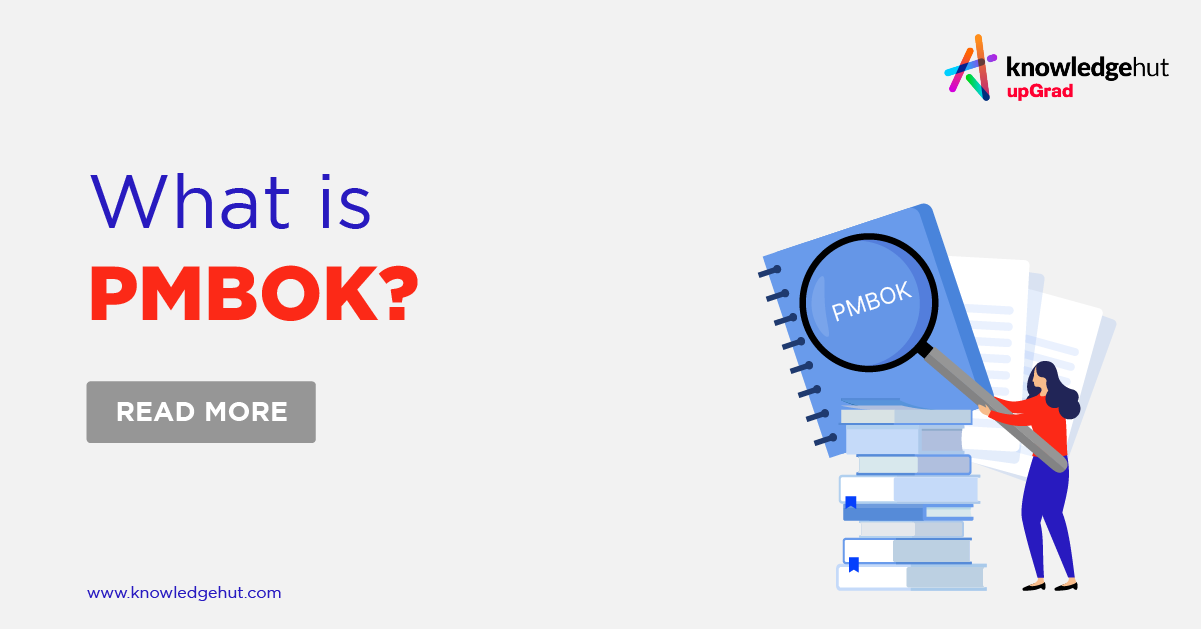Over the decade, the role of managers has changed considerably. Once seen as people who keep everything ticking behind the scenes, managers now have a much more visible role as leaders within an organization. While this shift in perception has made them more visible, it also means that managers need to be able to demonstrate how they make decisions on a day-to-day basis.
Whether you are an aspiring manager or already manage other people in your organization, understanding project definition, different techniques for making decisions will help you to both delegate tasks and make the right choices when necessary. In this article, we will take you through some of the most common methods used in Decision making in management and offer advice on when each one is most useful. You can take Project Management Courses for beginners to better understand the roles and responsibilities of a project manager.
What is Decision Making in Management?
Decision making in management is the process of making a choice between two or more options. This involves evaluating the pros and cons of various choices and choosing the best option to achieve a desired outcome. In management decision making is about acting in a way that meets organizational goals and objectives.
For example, a business manager may decide to invest in marketing to attract new customers. This decision could involve analyzing the costs, benefits, and risks involved with each possible course of action and choosing the best course of action for the organization.
Management decision is an important part of managing any organization. It allows managers to set goals and figure out what actions are needed to meet those goals, and evaluate whether those actions are working as intended. The feature of decision making in this context emphasizes the ability of managers to guide their organizations down the right path toward success, ensuring that every decision contributes to the overall strategic objectives of the project and the organization.
Characteristics of Decision Making in Management
Business Jargons
1. Rational-thinking
Rational thinking is a process in managerial decision making that helps us to make sound decisions. It involves systematically analyzing options and choosing the best course of action based on logic and evidence. To think rationally, we must first identify our goals and objectives.
2. Process
Many people view decision making as a cold, rational process. However, there is much more to it than simply choosing the most logical option. In reality, management decision making is influenced by a variety of factors, both conscious and unconscious. For example, our emotions play a role in the decisions we make, as do our personal values and beliefs.
3. Selective
A key characteristic of managerial decision making is that it is selective. That is, deciding involves picking the best options. There are many factors that influence what gets selected, including the clarity of the options, the relevance of the criteria, and weighing the various factors.
4. Purposive
A purposive approach to decision making is one that is based on the specific goals and objectives of the individual or organization. This type of decision making takes into account the desired outcome of the decision, and considers all of the available options in order to select the best possible course of action.
5. Positive
Decision making process in management is an essential skill in any area of life, whether you’re choosing what to eat for lunch or deciding which company to work for. While there are many different approaches to management decision making, there are some common characteristics that tend to lead to positive outcomes.
6. Commitment
If you want to make successful decisions, it is crucial that you have commitment. This means having the drive to see the decision through, even when it gets tough. It also means being able to defend your decision to others, even if they do not agree with you.
7. Evaluation
Evaluation is a key characteristic of good decision making. This involves considering all of the options and weighing their pros and cons before making a choice. It is important to be as objective as possible when evaluating the different options, and to look at the situation from all angles.
What is Decision Making Process in Management?
Decision making in management is the process of choosing among alternatives. It involves considering various factors, assessing the costs and benefits of each option, and making a decision that takes these factors into account. The goal of any decision-making process is to reach a conclusion that is as informed as possible given the available information. Also, check to avail PMP Certification Online to grow ahead in the future.
When a person is faced with a challenging or difficult situation, this can force them to make a choice that may not be in their best interest. This can lead to poor decision making and outcomes. For this reason, it is important to understand the features of decision making and how the process can be improved.
Delve into the most popular KnowledgeHut’s Project Management Courses:
Example of Decision Making Process
Let us check the decision-making process in management with examples.
1. Establishing Objectives
Establishing objectives is among the crucial decision-making steps in management. Without clear objectives, it can be difficult to make effective decisions that will help the organization meet its goals. Establishing objectives involves setting specific goals that need to be achieved within a certain timeframe.
For example, if you are the CEO of an e-commerce start-up with your business expanding, you would want to hire the right employees for various roles. Firstly, you would have to establish your objectives regarding which parts of your business you would need to hire new people.
2. Identify the Decision
The next important step in the decision-making process in management is identifying the problem that needs to be addressed. Once the problem has been identified, the manager will gather information about possible solutions. This may involve consulting with others, doing research, or running simulations. After weighing the pros and cons of each option, the manager will choose the course of action that they believe is most likely to succeed.
For example, after establishing the objectives regarding which parts of your business need new recruits, you would have to identify the course of action with others to recruit the ideal employees for the various job roles.
3. Gather Appropriate Information
This process of gathering information is known as information gathering. The different sources of information that managers can use include surveys, interviews, focus groups, observation, and secondary data sources such as articles and reports. After gathering this information, managers must then analyze it to determine which option is best.
For example, after identifying the course of action for the new recruits, you, along with your team, have to gather proper information about the various hiring trends and how to recruit the ideal talents.
4. Identify the Alternatives
One of the most important aspects of the decision-making process in management is identifying the alternatives. Without knowing what your options are, it can be difficult to make an informed decision. There are a number of different ways to identify the alternatives, but some of the most common methods include brainstorming, research, and consultation.
For example, after gathering the appropriate information on how to recruit the ideal talents, identify what alternatives you can offer to attract talents. Like, can you offer remote working or a hybrid working model?
5. Weigh the Evidence
When we define decision making in management One key step in this process is known as ‘weighing the evidence’. This simply means taking the time to consider all of the available information before making a final decision. This can include things like market research, financial data, and even gut instinct. By taking the time to weigh the evidence, managers can make better-informed decisions that are more likely to lead to success.
For example, after identifying what alternatives you can offer to attract new recruits, consider all the options to understand which would be the most profitable for your business. For this, you can take insights from market research, financial data, and even gut instinct.
6. Choose Among the Alternatives
One of the most important decisions that a manager has to make is which alternative to choose. There are multiple ways to approach this, such as by first considering all available alternatives, then assessing each against an explicit set of criteria. Finally, choosing one alternative over another could depend on other factors such as political considerations and the influence of stakeholders.
For example, after considering all the alternatives and research regarding hiring new recruits, choose the alternative which is the most profitable for your business.
7. Take Action
There are many approaches to decision making, but one of the most popular is the “take action” approach. This approach involves taking decisive action in response to a problem, without overthinking or second-guessing yourself. While this approach can lead to quick results, it also carries the risk of making impulsive decisions that may not be in the best interest of the company.
For example, after choosing the most profitable ways to hire new talents, take the course of action of searching and interviewing the individuals.
8. Review the Decision
Finally, after a decision has been made, it is important to review the results and make any necessary adjustments.
For example, after hiring the new recruits, review the whole process to see where you can make some changes to make the process more efficient.
Top Cities where KnowledgeHut Conduct Project Management Certification Training Course Online
Decision Making Styles in Management
1. Psychological
Psychological decision-making styles tend to be more creative and flexible, as they allow for gut instinct to play a role in the process. However, this style can also lead to impulsive decisions that are not well thought out.
2. Cognitive
Among the many decision-making styles, one of the most popular is the cognitive style. This involves making decisions based on logic and reasoning, rather than intuition or emotion. When using cognitive style, it is important to consider all of the available information before coming to a conclusion. This can sometimes mean taking a long time to make a decision, but it also means that you are more likely to make a sensible choice.
3. Normative
Normative decision making in project management is a style of decision making that is based on sticking to established rules and procedures. This type of decision making is often used in situations where there is little time for deliberation and the stakes are low.
Techniques of Decision Making in Management
1. SWOT Analysis
One popular decision making a step in management is known as SWOT analysis. This involves identifying the strengths, weaknesses, opportunities, and threats associated with a particular decision. By taking all of these factors into account, individuals can make informed and effective choices.
ResearchGate
2. Marginal Analysis
A popular technique is known as marginal analysis. It involves weighing the costs and benefits of each option to choose the one that will create the greatest value.
- Strengths: Marginal analysis forces you to think beyond the immediate consequences of your actions. It can help you make better decisions because you will consider how your actions affect other areas of your life.
- Weaknesses: It is time-consuming. If you’re trying to make a decision quickly, thinking about all the indirect costs and benefits can slow you down. This analysis can sometimes lead to paralysis by analysis. It happens when people get so caught up in thinking about all the possible costs and benefits that they never actually make a decision.
- Opportunities: Marginal analysis is that it can help you to identify opportunities that you might otherwise miss. It is because the process of thinking about indirect costs and benefits helps you see the world differently. For example, when considering whether to buy a new car, you might not immediately think about the environmental impacts of driving. But if you consider the indirect costs and benefits of car ownership, you might decide that buying a hybrid or an electric car is better for you and the planet.
- Threats: Marginal analysis only considers the incremental changes associated with a particular decision, and it does not take into account the other factors that may be affected by that decision. The analysis can be misleading if not used correctly, and this is because it only considers changes in absolute terms without taking into account the relative size of those changes.
3. Pareto Analysis
Pareto analysis is a decision-making technique that can be used to identify the most important factors in a given situation. Named after Italian economist Vilfredo Pareto, the technique is based on the principle that 20% of the causes will produce 80% of the results.
- Strengths: It is relatively simple to understand and use, meaning that it can be applied in a variety of settings with minimal training. Pareto Analysis is an objective method – it relies on data rather than subjective opinion – which increases its credibility in the eyes of decision-makers. The analysis is flexible and can be adapted to a wide range of problems and organizations.
- Weaknesses: It only looks at cause-and-effect relationships and does not consider other factors that may be important. Identifying all of the possible causes of a problem can be difficult, and some causes may be more important than others. Pareto analysis relies on statistical assumptions that may not always be accurate.
- Opportunities: It can help you focus your efforts on the most promising areas. Helps you prioritize opportunities so that you can allocate your resources more effectively. Also, it can help you track your progress over time and make necessary adjustments to your strategy.
- Threats: It is important to ensure that the data you are using is accurate and representative of the overall population. Pareto analysis can sometimes be biased towards more extreme outcomes. This analysis does not account for all possible factors that could impact a decision.
4. Decision Matrix
Finally, the decision matrix is a tool that can be used to compare different options side-by-side. By using these techniques, individuals can be sure that they are making sound decisions that will lead to positive outcomes.
- Strengths: It forces you to carefully consider all of the options and to weigh each one against the criteria. It can help ensure that you do not make a decision based on emotion or instinct. Can help prevent you from becoming overly attached to any option, as you are forced to consider each option objectively. It can provide a clear and concise way to communicate your decision-making process to others.
- Weaknesses: One issue is that the criteria used to evaluate the options can be subjective, and it can lead to different people coming to different conclusions based on the same data. Another potential problem is that all options may not be known when the decision matrix is created, leading to inaccurate or incomplete analysis.
- Decision matrices can be time-consuming to create and require a significant amount of data, making them impractical for use in situations where time is limited, or data is scarce.
- Opportunities: The ability to make better decisions by organizing and ranking options.
- Ability to see the possible outcomes of each option.
- The ability to compare options side-by-side.
- Ability to quickly identify the best option.
- Threats: The process of creating a matrix can be time-consuming and may require input from multiple stakeholders. The results of a decision matrix are only as good as the data that goes into it, and the final results will be misleading if the assumptions or inputs are inaccurate. Decision matrices can create a false sense of precision, leading to overconfidence in the results.
Discover the leading KnowledgeHut Category Courses:
Types of Decision Making in Management
Let’s explore some types of managerial decision making.
1. Routine and Basic Decision-making
Some decisions are more complex and require more thought. For instance, you may need to decide what to wear to a job interview or how to handle a difficult customer at work. In these situations, it is important to take the time to carefully consider your options before making a decision. Basic decision-making skills involve considering the potential consequences of each option and choosing the one that is most likely to lead to the desired outcome.
2. Personal and Organizational Decision-making
Decision making is a key component of both personal and organizational success. When making decisions, it is important to consider all of the potential options and their consequences. In some cases, there may be a clear best choice, while in others, the decision may be more difficult. However, the ability to make sound decisions is essential for both individuals and organizations.
3. Individual and Group Decision-making
Individual decision-making process in project management typically occurs when the stakes are low and the impact will be limited to a single person. Group decision making is necessary when the stakes are high or the impact will be felt by multiple people. In general, group decision making is more effective than individual decision making because it allows for a greater diversity of perspectives and more thorough deliberation.
4. Programmed and Non-Programmed Decision-making
Non-programmed decisions making in operation management are unique and not repetitive. Typically, they are made in response to an unforeseen event or opportunity. Programmed decisions, on the other hand, are routine and often based on established rules or procedures. Because they are more predictable, programmed decisions are typically less risky and easier to make. However, non-programmed decisions often require more creativity and judgment, and can be more difficult to reverse if they turn out to be wrong.
5. Policy and Operating Decision-making
Policy and operating decision making are two important aspects of any business. Policy decisions are made at the strategic level and focus on long-term issues, such as the overall direction of the company. Operating decisions, on the other hand, are made at the operational level and focus on short-term issues, such as which products to produce and how to staff the production process.
6. Tactical and Strategic Decision-making
This is an essential type of managerial decision making. Tactical decision making is important because it helps organizations to respond quickly to changes in the environment. However, too much emphasis on tactical decision making can lead to a lack of focus on long-term goals. Strategic decision making is important because it helps organizations to establish a clear direction and make informed choices about resource allocation. Both tactical and strategic decision making are necessary for an organization to be successful.
7. Planned and Unplanned Decision-making
There are two types of decision making in management: planned and unplanned. Planned decisions are those that are made in advance, after considering all the options and their possible outcomes. Unplanned decisions, on the other hand, are those that are made on the spot, without any prior consideration. Both types of decision making in management have their own advantages and disadvantages.
8. Organizational, Departmental, and Interdepartmental Decision-making
Organizational type of managerial decision making is the process of identifying and choosing the best course of action to achieve organizational goals. It includes both formal and informal methods of decision making, and it occurs at all levels of an organization. This is one of the managerial decision-making examples that managers have to be great at.
Interdepartmental decision making is the process of identifying and choosing the best course of action to achieve interdepartmental goals. It occurs at all levels where two or more departments interact.
Organizational, departmental, and interdepartmental types of managerial decisions making are all important aspects of an organization’s operations, and each type of decision making has its own benefits and challenges.
Difficulties in Decision Making Process
Any decision-making model in management made by an individual or organization has the potential to be difficult. There are many factors that can contribute to difficulty in decision making in principles of management, such as unclear objectives, lack of information, and emotional attachments. Here are five of the most common difficulties that can arise during the decision-making process:
- Avoiding Discomfort: Without clear and specific objectives, it can be difficult to decide which course of action to take. This is often a problem when organizations are facing new challenges or opportunities.
- Consultation Ambiguity: Not having enough information about a situation can make it difficult to identify all of the possible options and their potential consequences. This can lead to decisions that are based on gut feeling or incomplete data.
- Blind Spot: When individuals or groups have strong emotional attachments to an issue, they may find it difficult to be objective in their decision making. This can lead to decisions that are driven by personal biases rather than what is best for the organization as a whole.
- Indecisive: When multiple people are involved in the decision-making model in management, group dynamics can complicate matters. disagreements over objectives, differing opinions on the best course of action, and power struggles can all contribute to difficulty in reaching a decision.
- Group-thinking: Sometimes, decisions must be made quickly, without adequate time for careful consideration. This can lead to rushed decisions that may not be well thought out or optimal.
Unleash your potential with agile certification online and become an Agile Management expert. Join the revolution now!
Conclusion
A project manager has the role of decision making in management. A good decision maker is someone who is able to consider all the facts and options before making a decision. They also need to be able to take into account the long-term consequences of their decision and have the ability to communicate their decision effectively to others.
Good decision making is an essential skill for any manager, as it can help streamline operations and improve efficiency. You can enroll for PRINCE2 Certification Training, to continually expand your knowledge on decision making, and the meaning of decision making in management you will be better equipped to handle any challenges that come your way.




